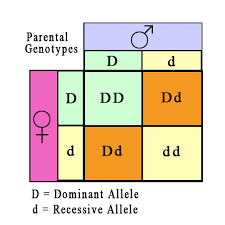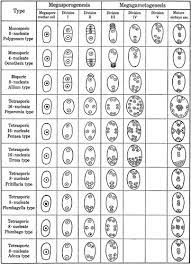AMINO ACIDS - DEFINITION ,CLASSIFICATION,STRUCTURE AND PROPRETIES
DEFINITION
Amino acids :
Amino acids are molecules that combine to form proteins. Amino acids and proteins are the building blocks of life. When proteins are digested or broken down, amino acids are left. The human body uses amino acids to make proteins to help the body:
v Break down food
v Grow
v Repair body tissue
v Perform many other body functions
v Amino acids can also be used as a source of energy by the body.
CLASSIFICATION
Amino acids are classified into three groups:
ü
Essential amino acids
ü
Nonessential amino acids
ü
Conditional amino acids
ESSENTIAL AMINO ACIDS:
Essential amino acids cannot be made by the body. As a
result, they must come from food.The 9 essential amino acids are: histidine,
isoleucine, leucine, lysine, methionine, phenylalanine, threonine, tryptophan,
and valine.
NONESSENTIAL AMINO ACIDS:
Nonessential means that our bodies can produce the amino
acid, even if we do not get it from the food we eat. Nonessential amino acids
include: alanine, arginine, asparagine, aspartic acid, cysteine, glutamic acid,
glutamine, glycine, proline, serine, and tyrosine.
CONDITIONAL AMINO ACIDS:
Conditional amino acids are usually not essential, except in
times of illness and stress. Conditional amino acids include: arginine,
cysteine, glutamine, tyrosine, glycine, ornithine, proline, and serine.
STRUCTURE
|
s.no |
Classification
|
Name of amino
acids |
structure |
|
1 |
Non-essential
Amino Acid |
Glycine |
|
|
2 |
Non-essential
Amino Acid |
Alanine |
|
|
3 |
Essential
amino acid |
Valine |
|
|
4 |
Essential
amino acid |
Leucine |
|
|
5 |
Essential
amino acid |
Isoleucine |
|
|
6 |
Essential
amino acid |
Phenylalanine |
|
|
7 |
Essential
amino acid |
Tryptophan |
|
|
8 |
Essential
amino acid |
Methionine |
|
|
9 |
Non-essential
Amino Acid |
Proline |
|
|
10 |
Non-essential
Amino Acid |
Serine |
|
|
11 |
Essential
amino acid |
Threonine |
|
|
12 |
Non-essential
Amino Acid |
Tyrosine |
|
|
13 |
Non-essential
Amino Acid |
Asparagine |
|
|
14 |
Conditional
amino acid |
Cysteine |
|
|
15 |
Conditional
amino acid |
Glutamine |
|
|
16 |
Non-essential
Amino Acid |
Aspartic acid |
|
|
17 |
Non-essential
Amino Acid |
Glutamic acid |
|
|
18 |
Essential
amino acid |
Histidine |
|
|
19 |
Essential
amino acid |
Lysine |
|
|
20 |
Non-essential
Amino Acid |
Arginine |
|
PROPERTIES OF AMINO ACIDS:
Physical Properties:
ü
Amino acids are colorless, crystalline solid.
ü
All amino acids have a high melting point
greater than 200o
ü
Solubility: They are soluble in water, slightly
soluble in alcohol, and dissolve with difficulty in methanol, ethanol, and
propanol. R-group of amino acids and pH of the solvent play important role in
solubility.
ü
On heating to high temperatures, they decompose.
ü
All amino acids (except glycine) are optically
active.
ü
Peptide bond formation: Amino acids can connect
with a peptide bond involving their amino and carboxylate groups.
ü
A covalent bond formed between the alpha-amino
group of one amino acid and an alpha-carboxyl group of other forming
-CO-NH-linkage.
ü
Peptide bonds are planar and partially ionic.
Chemical Properties:
1)Zwitterionic property:
A zwitterion is a molecule with functional groups, of which
at least one has a positive and one has a negative electrical charge. The net
charge of the entire molecule is zero. Amino acids are the best-known examples
of zwitterions. They contain an amine group (basic) and a carboxylic group
(acidic). The -NH2 group is the stronger base, and so it picks up H+ from the
-COOH group to leave a zwitterion. The (neutral) zwitterion is the usual form
of amino acids that exist in the solution.
2)Amphoteric property:
Amino acids are amphoteric in nature that is they act as
both acids and base due to the two amine and carboxylic groups present.
3)Ninhydrin test:
When 1 ml of Ninhydrin solution is added to a 1 ml protein
solution and heated, the formation of a violet color indicates the presence of
α-amino acids.
The xanthoproteic test is performed for the detection of
aromatic amino acids (tyrosine, tryptophan, and phenylalanine) in a protein
solution. The nitration of benzoid radicals present in the amino acid chain
occurs due to a reaction with nitric acid, giving the solution yellow
coloration.
5)Reaction with Sanger’s reagent:
Sanger’s reagent (1-fluoro-2, 4-dinitrobenzene) reacts with
a free amino group in the peptide chain in a mild alkaline medium under cold
conditions.
6)Reaction with nitrous acid:
Nitrous acid reacts with the amino group to liberate
nitrogen and form the corresponding hydroxyl.























Comments